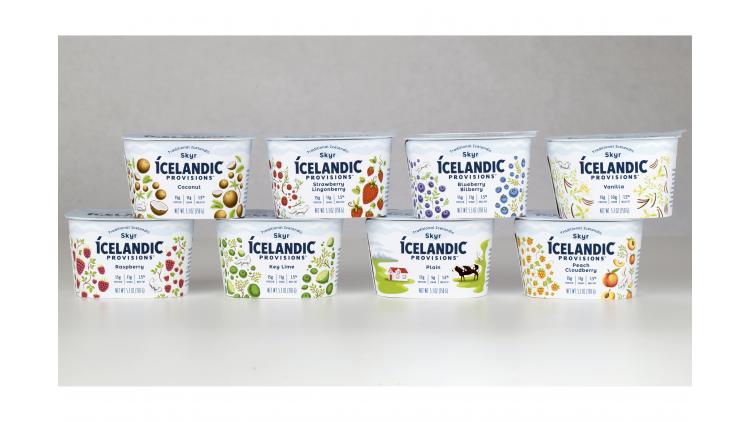March 29, 2018

Sustainability continues to be a major global trend in the packaging industry as consumers consistently seek out healthier food options and manufacturers whose innovative packaging and processes positively impact the environment and the quality of their goods. In fact, sustainable packaging has never been more important, according to 92% of the respondents to Packaging Digest’s 2017 Sustainable Packaging Study.
While sustainable packaging used to simply mean packaging that may be composted, recycled or reused, in 2018 we’ll see manufacturers put a focus on packaging technologies and trends that allow for the reduction of waste and provide a safer product while enhancing their brand message.
Here are four areas where sustainability is making a significant impact in food packaging.
1. The reduction of food waste is a priority
According to The New York Times, 60 million metric tons, or about $162 billion of food, is wasted every year in the United States alone. Not only is this a significant economic burden, but it’s also an environmental one, as wasted food eventually ends up in landfills where it emits methane, a powerful greenhouse gas.
As the impact of wasted food gains awareness, consumers are taking steps to reduce their contribution by composting leftovers, sharing food and selecting perishables that will stay fresher longer.
To meet the consumers’ demands for healthy and longer lasting foods, manufacturers must develop packaging that is able to extend a product’s shelf life without impacting the quality or integrity of the product it contains.
Currently, implementing barrier technology—such as multi-barrier technology (MBT), which involves embedding a barrier layer such as ethylene vinyl alcohol (EVOH) within layers of polypropylene packaging, or inert barrier technology (IBT), which involves adding a silicon oxide layer to the inside and outside of the plastic cup—is the method of choice to extend the shelf life of plastic-packaged products without adding preservatives. This is an important consideration for manufacturers in 2018 as health conscious consumers are seeking “natural” foods with fewer additives.
2. Food safety must be taken seriously
Extending a product’s shelf life does more than reduce global food waste and prevent consumer health issues, as maintaining food freshness and eliminating contamination may have environmental implications as well. Any food safety recall, those relating to shelf life or contamination during production, could potentially mean enormous quantities of wasted food, as well as the use of additional resources during the reproduction and transportation of the product.
Still, it’s no surprise that balancing food safety and sustainability is an integral aspect of maintaining customer trust and loyalty as consumers today are demanding more information about the quality of their food.
Recalls have been known to be particularly damaging to a company’s brand and may also negatively impact a company’s financial stability. Manufacturers may wish to pursue certification from the Safe Quality Food Institute (SQFI) to minimize risk. Recognized by the Global Food Safety Initiative (GFSI), SQFI links primary production certification to food manufacturing, distribution and agent management certification to ensure food safety throughout the supply chain.
3. Sustainability will become part of the brand message
Americans are more environmentally conscious than ever, often seeking out ways to make a positive impact on the environment without making major adjustments to their lifestyle. So selecting products in sustainable packaging or engaging with companies known for their sustainable practices is often a relatively easy way for consumers to feel like they’re making a difference.
Sustainable Brands, a global learning, collaboration and commerce community of forward-thinking businesses, reports that 42% of consumers are willing to pay more for products and services provided by companies that are committed to green initiatives. This means manufacturers must not only consider incorporating new and interesting materials into their packaging—such as opting for plastic packaging over glass or adding a paperboard element—but become more transparent about their processes, as well.
4. Sustainability is an investment worth making in 2018
While many companies avoid making sustainable improvements, assuming there will be a hefty upfront investment required, the reality is that going green in 2018 simply makes smart business sense. The return on investment will generally be positive, especially given that demand for green products and solutions continues to grow.
Savvy companies must consider the environmental, economic and social consequences of their packaging to increase market share. For instance, you will see a bigger shift to be eco-friendlier in the dairy section. Icelandic Provisions’ Skyr recently changed from a printed shrink-sleeved polypropylene cup to the K3-H package from Greiner Packaging, a clear PP cup with an easily removed printed paper wrapped label that also covers the cup base and is printed with additional product information on the back. Both components are 100% recyclable.
Innovative companies who truly listen to the wants and needs of their consumer audience will continue to make strides toward a safer product and a healthier planet.

Jörg Sabo is the marketing director for Greiner Packaging, one of Europe’s leading plastic packaging manufacturers in the Food and Non-Food sector with U.S. operations based in Pittston, PA.
************************************************************************************
Production efficiencies, ecommerce challenges, sustainability trends, new bioplastic technologies and more are among the topics on the agenda at the new Packaging Hub at EastPack 2018. This free educational program will have more than 16 hours of can’t-miss presentations and demonstrations. Register to attend today!
About the Author(s)
You May Also Like


